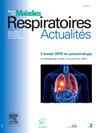CBNCs中的组织生物标志物
Q4 Medicine
引用次数: 0
摘要
组织生物标志物在非小细胞肺癌(NSCLC)的治疗中起着核心作用。预测性生物标记物的评估通过获得靶向治疗或免疫治疗来指导治疗决策,并形成了肿瘤学个性化医疗的基础。自从发现EGFR基因突变以来,由于针对致癌驱动因素和抗体药物偶联物的治疗方法的发展,生物标志物的数量显著增加。这些预测性生物标志物包括通过测序确定的分子改变(EGFR、BRAF、KRAS、ALK、ROSI、RET、MET、HER2、NTRK、NRG1),以及通过免疫组织化学评估表达的蛋白质生物标志物(PD-L1、ALK、ROS1、NTRK、HER2、HER3、MET、TROP2、MTAP、CEACAM5)。NSCLC的检测建议是不断发展的,为了给每个患者提供最好的治疗,保持最新是至关重要的。本文章由计算机程序翻译,如有差异,请以英文原文为准。
Biomarqueurs tissulaires dans les CBNPC
Tissue biomarkers play a central role in the management of non-small cell lung cancer (NSCLC). The evaluation of predictive biomarkers guides therapeutic decisions by enabling access to targeted therapies or immunotherapy, and forms the foundation of personalized medicine in oncology. The number of biomarkers has increased significantly since the discovery of EGFR gene mutations, due to the development of therapies targeting oncogenic drivers and antibody drug conjugates. These predictive biomarkers include, molecular alterations identified through sequencing (EGFR, BRAF, KRAS, ALK, ROSI, RET, MET, HER2, NTRK, NRG1), and protein biomarkers whose expression is assessed by immunohistochemistry (PD-L1, ALK, ROS1, NTRK, HER2, HER3, MET, TROP2, MTAP, CEACAM5). Testing recommendations in NSCLC are constantly evolving, and it is essential to stay up to date in order to propose the best treatment to each patient.
求助全文
通过发布文献求助,成功后即可免费获取论文全文。
去求助
来源期刊

Revue des Maladies Respiratoires Actualites
Medicine-Pulmonary and Respiratory Medicine
CiteScore
0.10
自引率
0.00%
发文量
671
 求助内容:
求助内容: 应助结果提醒方式:
应助结果提醒方式:


